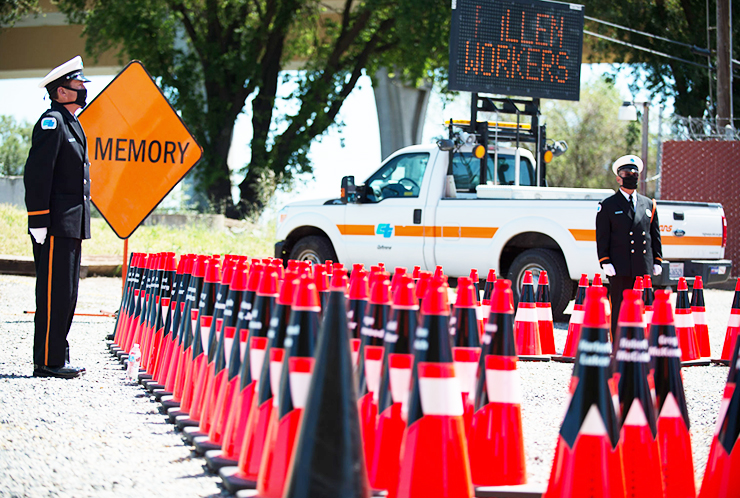Director's Message

Caltrans Director
The events of the last few months have posed historic challenges to our society and institutions. We are experiencing a global health pandemic, and have witnessed multiple troubling incidents that have displayed the inequities and injustice that persist in our country.
Unfortunately, those inequities have extended into the field of transportation over the years. Far too often, past transportation decisions quite literally put up barriers, divided communities, and amplified racial inequalities, particularly in underserved communities.
I want to assure you that Caltrans, as part of the California State Transportation Agency, is strongly committed to creating and carrying through policies of racial equity, inclusion and diversity — and addressing flawed decisions made in earlier times.
Specifically, here are some of the ways Caltrans is trying to achieve greater equity in all of its operations:
- Equitable access to and input in the transportation planning process. We are working to be more proactive to hearing all voices during the project development and community input processes, and to providing access to the decision-making process for all communities, groups and people.
- Equitable participation in contracting and subcontracting. As you’ll read in this issue of the Mile Marker, Caltrans strives to hire more companies owned by those considered disadvantaged, disabled, or have been injured serving our country. We have met and exceeded state and federal goals for hiring and procurement, and are encouraging more businesses to share in the opportunities that come with improving the state transportation system.
- Equitable transportation benefits across society (equal access to mass transit, addressing active transportation needs).
- Equitable hiring. Caltrans is engaging with college students considering a career in transportation, connecting with undergraduate programs to give students exposure to real-life applications, and strengthening ties with engineering programs with higher African American student enrollment. Caltrans already has a diverse work force — 53 percent of our employees are racial minorities — and we will continue to be open to more viewpoints and backgrounds.
Today, and moving forward, we are reaffirming the importance of uplifting diversity and equity in our work at Caltrans. We all must be more aware of how our decisions impact the disadvantaged and underserved in the state, and commit to eliminating the disproportionate impacts and burdens placed on these communities. This outlook should be ingrained in everything that we do.
It’s part of Gov. Gavin Newsom’s declaration of a “California For All” — not just a catchy slogan, but a commitment to help every resident realize their potential and share in the Golden State’s bounty.
As we manage through the COVID-19 pandemic, I wish to assure everyone that Caltrans remains as dedicated as ever to maintaining a safe, efficient transportation system that keeps all essential goods moving.
For this, credit goes to our 21,000 employees, who have adjusted to the crisis by incorporating social distancing rules, creating telecommuting options, and coordinating with contractors to continue work on important projects in this environment.
Caltrans seized on this unprecedented time of light traffic to expedite work on about 100 road projects, many in urban areas. This is improving our roads with an eye toward reducing construction delays from these projects once more traffic returns to our state highways. An article in this Mile Marker edition describes Caltrans’ progress during this time.
Caltrans has also adjusted our permit processes to temporarily ease weight limits for trucks carrying critical medical supplies in the state. This allows more goods to be transported into and around California. Plus, to create additional convenience for truckers and other motorists, we’ve temporarily allowed food trucks to operate at select rest areas to provide more hot, quick meal options.
We continue to look for more opportunities to improve the highway system during this period.

In the midst of the coronavirus crisis, we continued the Caltrans tradition of honoring our fallen heroes on April 30. For the 30th Annual Caltrans Workers Memorial, we honored the 189 colleagues who have died in the line of service since 1921.
According to the U.S. Bureau of Labor Statistics, highway construction and maintenance work is one of the most hazardous occupations in the United States. The dangers of working on state and local roads also extend to contractors, members of the California Highway Patrol, and tow truck workers.
For this year’s remembrance, we originally planned for a large crowd to again join us at the State Capitol. But since large gatherings are not currently possible, we moved to a more intimate location along the Sacramento River in view of the Caltrans Workers Memorial Bridge. Many of Caltrans’ 12 regional districts also staged their own local memorials. (To view video of this year’s memorial, visit @CaltransHQ on Facebook or YouTube.)
We are grateful no new Caltrans names were added to the memorial in the last year, and we hope the ceremony continues to serve as a sobering message for drivers to “Be Work Zone Alert” and to “Slow for the Cone Zone.”
The safety of the traveling public and those doing vital work on our highways will always be our No. 1 priority.
Take care and be well.

